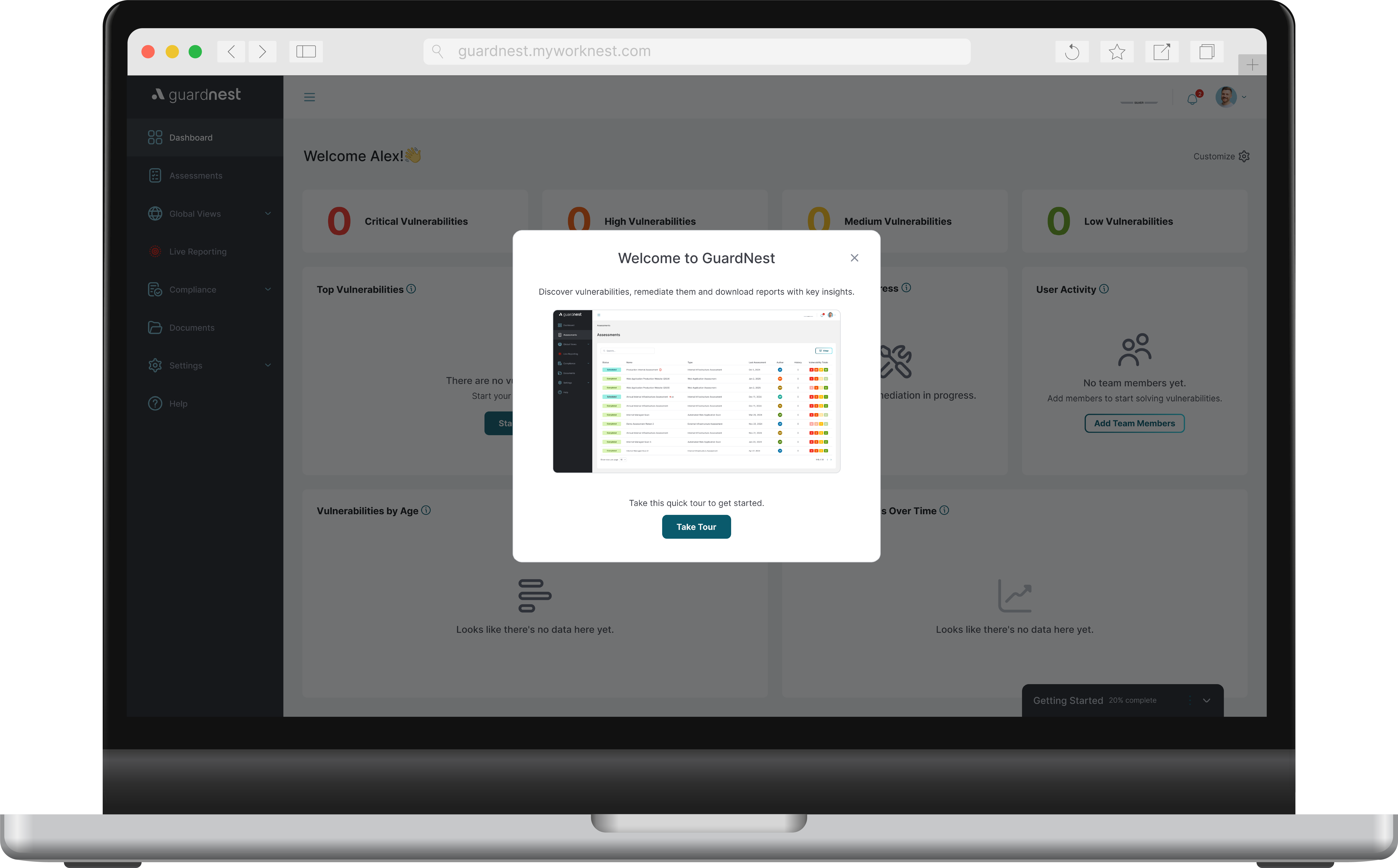Cyber Security Awareness Month: Cyber Security Priorities


Cyber Security Awareness Month is no longer just a routine reminder to change your password. In today's hyper-connected world, it serves as an urgent call to action. The digital landscape has fundamentally shifted, creating a perfect storm where the lines between home and office have vanished, human trust is the most targeted vulnerability, and artificial intelligence crafts deceptions indistinguishable from reality. This year, our focus must sharpen on the critical intersections of these modern dangers: the persistent work-from-home (WFH) warnings, the sophisticated art of human hacks, the unseen danger of WiFi traps, and the disorienting power of AI illusions. Understanding how these threats converge is the first step toward building a resilient digital defense.
The Blurring Lines: WFH Dangers and the Expanded Attack Surface
The transition to remote work has permanently altered the corporate security perimeter, extending it to countless home offices, each with its own unique set of vulnerabilities. This distributed environment has exponentially increased the attack surface, providing cybercriminals with a wealth of new entry points that bypass traditional enterprise defenses. The convenience of remote work comes with a hidden cost: a diminished security posture that requires diligent attention from both employees and organisations.
Unsecured Home Networks:
Your home network was likely designed for streaming and browsing, not for safeguarding sensitive corporate data. Routers with default passwords, outdated firmware, and a lack of network segmentation create significant vulnerabilities. Every smart TV, digital assistant, and connected appliance on that same network is a potential pivot point for an attacker to gain access to your work devices. The security of your home network is now an integral part of your organization's data protection strategy.
Blended Personal and Professional Devices:
Using a personal laptop for work or checking work email on a family tablet blurs critical security boundaries. Personal devices often lack enterprise-grade security controls like advanced endpoint protection, data loss prevention, and managed updates. This blending creates a high-risk scenario where a malware infection from a personal activity like downloading a seemingly harmless file can quickly compromise corporate assets, leading to a serious data breach.
Shadow IT, Cloud Migration, and Data Protection:
To get their jobs done, remote employees often turn to unsanctioned cloud services and applications, a practice known as "Shadow IT." While seemingly efficient, using these tools without IT oversight means corporate data is being stored and transferred outside of secure, monitored environments. This creates data silos that are invisible to security teams, complicating data protection compliance with regulations like GDPR and hampering any effective incident response plan.
The Most Potent Weapon: Human Hacks and the Art of Deception
Despite billions invested in technical safeguards, the most reliable entry point for attackers remains the human mind. The global cybersecurity market is projected to reach $368.19 billion by 2033, yet attackers know that manipulating a person is often easier and cheaper than breaking through a firewall. This psychological exploitation, or social engineering, is the master key that unlocks secure systems, turning employees into unwitting accomplices.
Understanding Social Engineering:
Social engineering preys on fundamental human tendencies: trust, fear, curiosity, and a desire to be helpful. Attackers create compelling pretexts impersonating a CEO, an IT support technician, or a trusted vendor—to trick individuals into divulging credentials, transferring funds, or executing malware. A 2024 survey revealed that approximately 68% of breaches were caused by human factors, underscoring that our instincts are now a primary target for cyber threats.
The Threat of Phishing Campaigns:
Phishing remains the most common form of social engineering. These deceptive emails, text messages (smishing), and voice calls (vishing) are crafted to create a sense of urgency or curiosity, prompting victims to click malicious links or open infected attachments. Modern phishing campaigns are highly targeted and sophisticated, using publicly available information to personalize their lures and bypass traditional email security filters.
AI's Amplification of Human Vulnerabilities:
Artificial intelligence is supercharging these human hacks. AI algorithms can analyze vast datasets to craft hyper-personalized phishing emails that mimic a target's communication style with uncanny accuracy. Furthermore, deepfake technology can convincingly clone a person's voice or likeness for vishing attacks and fraudulent video calls, making it increasingly difficult to trust what we see and hear. This AI-driven evolution of deception demands a new level of skepticism and verification in all our digital interactions.
Invisible Threads, Visible Threats: Unmasking WiFi Traps
The connectivity we take for granted is a primary battleground for cybersecurity. Whether you're working from a coffee shop, an airport, or your living room, the WiFi network you connect to can be a gateway for attackers. These invisible traps are designed to intercept your data, inject malware, and compromise your devices without you ever knowing.
Public WiFi:
Public WiFi networks are inherently insecure. Attackers can easily set up "evil twin" hotspots with legitimate-sounding names (e.g., "Airport_Free_WiFi") to trick users into connecting. Once you're on their network, they can perform "man-in-the-middle" attacks, intercepting all your traffic—including login credentials and financial information. Data shows that nearly 50% of remote employees use public Wi-Fi networks, exposing them and their employers to significant risks.
Securing Your Home Network:
Your home network is the foundation of your remote work security. Safeguarding it involves more than just a strong password. You should change the default administrative credentials on your router, enable WPA3 encryption, keep the firmware updated, and create a separate guest network for visitors and less secure devices. This segmentation helps ensure that a vulnerability in one device doesn't compromise your entire network.
The IoT Explosion and Network Vulnerabilities:
The proliferation of Internet of Things (IoT) devices has introduced countless new, often insecure, endpoints onto home networks. Each smart device represents a potential vulnerability that can be exploited to launch attacks. Securing these devices by changing default passwords and disabling unnecessary features is a critical step in reducing your network's overall attack surface.
The Promise of Advanced Security Technologies:
Defending against sophisticated WiFi threats requires more than basic precautions. Virtual Private Networks (VPNs) are essential tools that encrypt your internet traffic, making it unreadable to anyone trying to intercept it, even on a compromised network. Additionally, modern threat intelligence platforms can help identify and block connections to known malicious domains, offering another layer of protection.
The AI Illusion: When Trust Becomes a Trap
Artificial intelligence is a transformative technology, but its power is a double-edged sword. While AI drives innovation and strengthens defenses, adversaries are weaponizing it to create a new class of cyber threats. These "AI illusions" are attacks that are more deceptive, adaptive, and effective than anything seen before, fundamentally challenging our ability to discern friend from foe.
AI as a Double-Edged Sword:
For defenders, machine learning algorithms can analyse network traffic to detect anomalies and predict attacks before they happen. However, attackers use the same technology to automate reconnaissance, develop evasive malware that changes its code to avoid detection, and launch attacks at an unprecedented scale and speed. The result is an AI arms race where both sides are constantly innovating.
The Deceptive Nature of Generative AI:
Generative AI tools, including advanced AI chatbots, can produce incredibly realistic text, images, and audio. This capability is exploited to create phishing emails free of the usual grammatical errors and deepfake audio for vishing scams. Analysts report that 68% of AI-generated phishing attempts are harder to detect than ever before, blurring the line between authentic and malicious communication.
Over-Reliance and False Sense of Security:
As organisations integrate AI into their workflows, there is a risk of becoming over-reliant on the technology and developing a false sense of security. An AI chatbot, for instance, could be manipulated into revealing sensitive information or used to spread misinformation within an organisation. Critical thinking and human oversight remain indispensable components of a robust cybersecurity strategy.
New Attack Vectors Enabled by AI:
AI enables entirely new attack vectors. Adversarial AI can be used to "poison" the training data of machine learning models, causing them to make incorrect decisions that compromise security. AI can also be used to crack passwords more efficiently and discover zero-day vulnerabilities in software, constantly creating new challenges for defenders.
The Imperative of AI Governance and Regulation:
The rapid advancement of AI necessitates strong governance and clear policies around its ethical use. Organisations must establish guidelines for developing, deploying, and monitoring AI systems to ensure data privacy and prevent misuse. Regulations like GDPR are evolving to address the unique challenges posed by AI, holding companies accountable for how their algorithms process personal data.
Actionable Playbooks: Fortifying Your Defences
Awareness is the first step, but action is what creates resilience. The rising cost of cybercrime, estimated to hit $10.5 trillion annually by 2025, makes proactive defense non-negotiable.
For Individuals: Building Personal Cyber Resilience:
- Practice Healthy Skepticism: Verify unexpected requests, especially those involving money or credentials, through a separate communication channel.
- Implement Multi-Factor Authentication (MFA): Enable MFA on all critical accounts. It is one of the most effective single actions you can take to secure your digital life.
- Secure Your Network: Use a VPN, especially on public WiFi. At home, change default router passwords and keep firmware updated.
- Embrace Continuous Learning: Stay informed about the latest phishing techniques and scams. Your knowledge is a powerful shield.
For Organisations: Cultivating a Secure Culture:
- Develop Robust Policies: Create and enforce clear policies for remote work, device usage, data handling, and the acceptable use of AI tools.
- Invest in Training: Move beyond annual check-the-box training. Implement continuous security awareness programs that include phishing simulations and education on new threats like AI-generated deepfakes.
- Layer Your Defenses: Combine technical controls like advanced email security and endpoint detection with strong human-centric defenses.
- Prepare an Incident Response Plan: Know what to do when a breach occurs. A well-rehearsed plan can significantly reduce the impact and cost, especially when the global average cost of a data breach has reached $4.88 million.
Conclusion: The Ongoing Battle for Digital Safety
Effective cybersecurity is not a product you can buy or a project with an end date; it is a continuous commitment to learning, adaptation, and vigilance. It requires a partnership between organisations providing the tools and policies and individuals practicing secure habits daily. By understanding the convergence of these new threats and taking deliberate, proactive steps to fortify our defenses, we can collectively raise the bar against those who seek to exploit our digital lives.
For Cyber Security Awareness Month, we created a guide to help breakdown the priorities of cyber security risks, download for free here.
.png)








.svg)








.webp)


